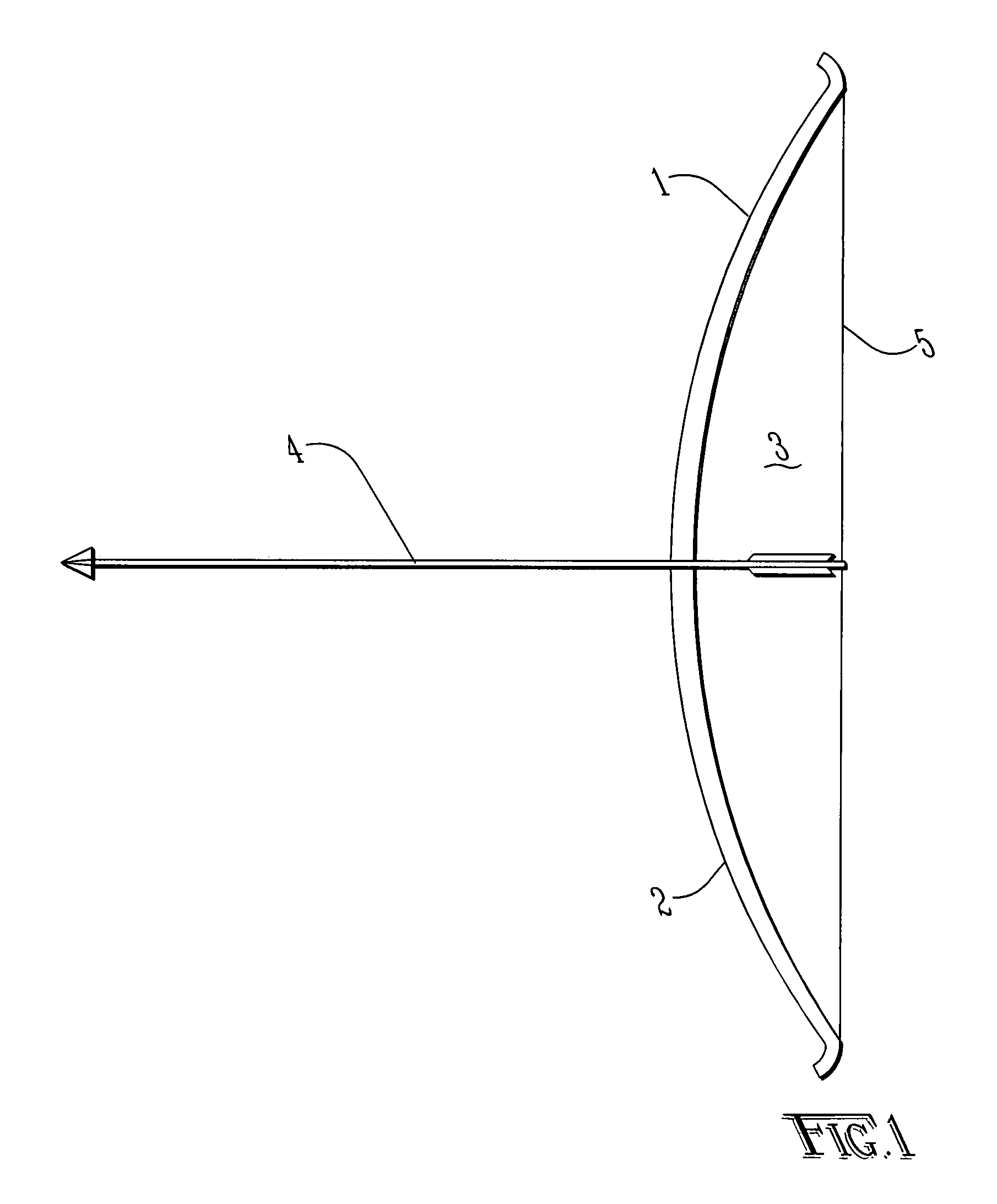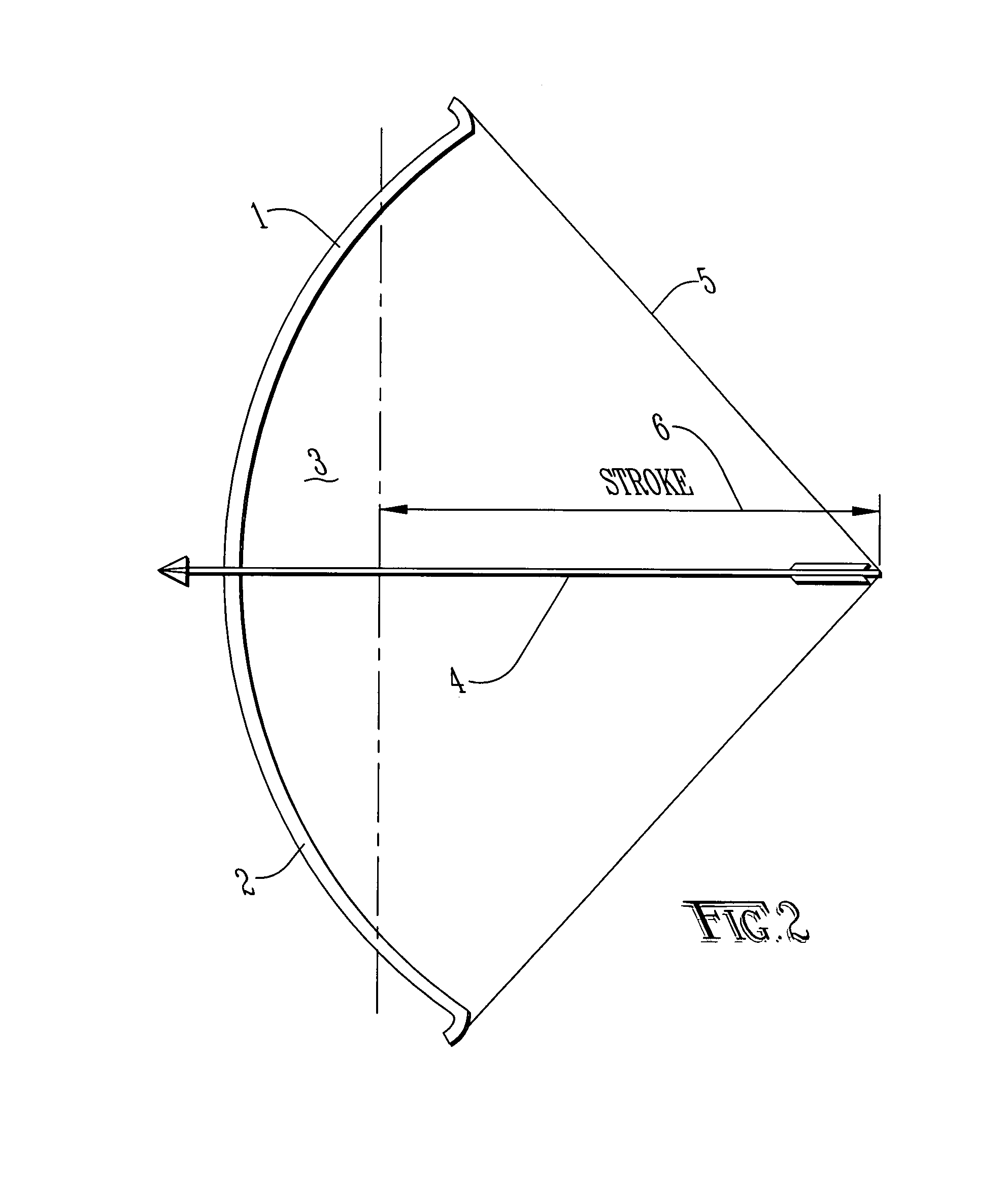Reverse draw technology archery
a technology of reverse draw and archery, applied in the field of reverse draw technology archery, can solve the problems of reducing the performance of the crossbow, affecting the accuracy of the crossbow, and requiring a great deal of time to learn the art, and achieve the effect of less draw force and greater performan
- Summary
- Abstract
- Description
- Claims
- Application Information
AI Technical Summary
Benefits of technology
Problems solved by technology
Method used
Image
Examples
Embodiment Construction
[0036]Referring to the drawings, FIG. 1 shows the side view of a typical recurve bow having an upper limb (1) and a lower limb (2) joined at opposing ends by a launch string (5). An arrow (4) is attached to the launch string (5) midway on said string by a knock. An archer would grasp the bow midway between the upper limb (1) and the lower limb (2) and at the arrow knock and pull said launch string (5) away from the generally concave area (3) between said limbs into a ready to fire position as shown in FIG. 2. The distance that the arrow (4) has traveled from its most rear position (FIG. 2) forward to the at rest position (FIG. 1) is called the power stroke (6). The greater this distance is with all other factors being equal, such as arrow weight and force required to pull back the launch string (5), the faster the arrow will fly.
[0037]Referring now to FIG. 3, this is a side view of a typical single cam compound bow, in the ready to fire position, consisting of an upper limb (15) and...
PUM
 Login to View More
Login to View More Abstract
Description
Claims
Application Information
 Login to View More
Login to View More - R&D
- Intellectual Property
- Life Sciences
- Materials
- Tech Scout
- Unparalleled Data Quality
- Higher Quality Content
- 60% Fewer Hallucinations
Browse by: Latest US Patents, China's latest patents, Technical Efficacy Thesaurus, Application Domain, Technology Topic, Popular Technical Reports.
© 2025 PatSnap. All rights reserved.Legal|Privacy policy|Modern Slavery Act Transparency Statement|Sitemap|About US| Contact US: help@patsnap.com



